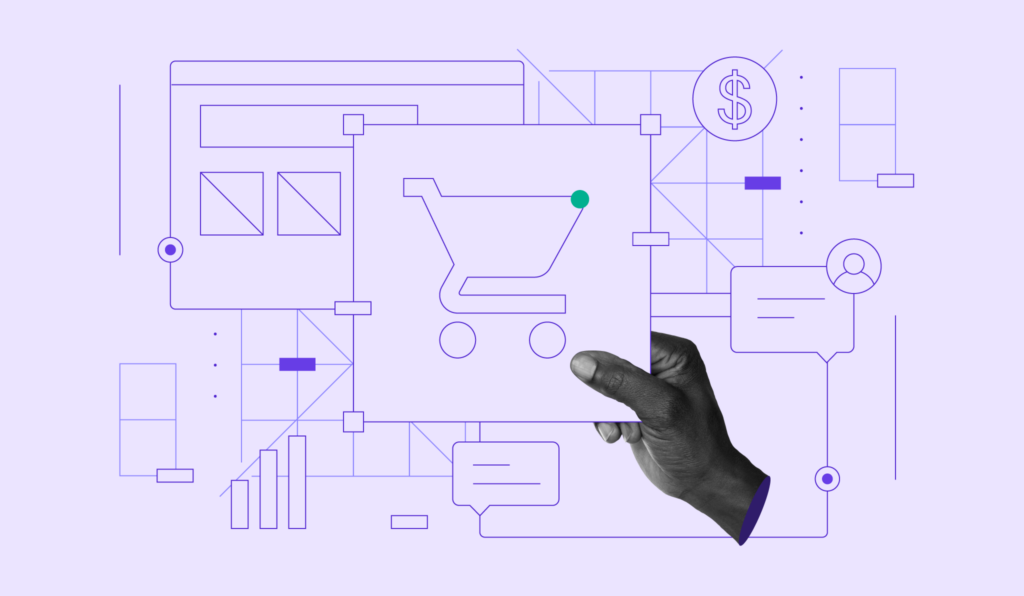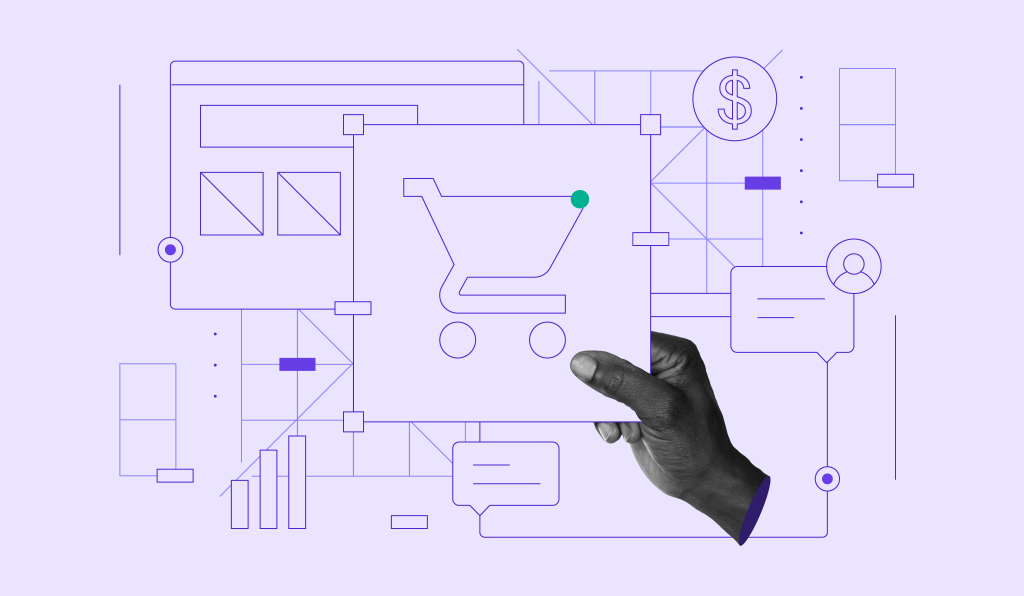Ecommerce marketing explained: the definitive guide
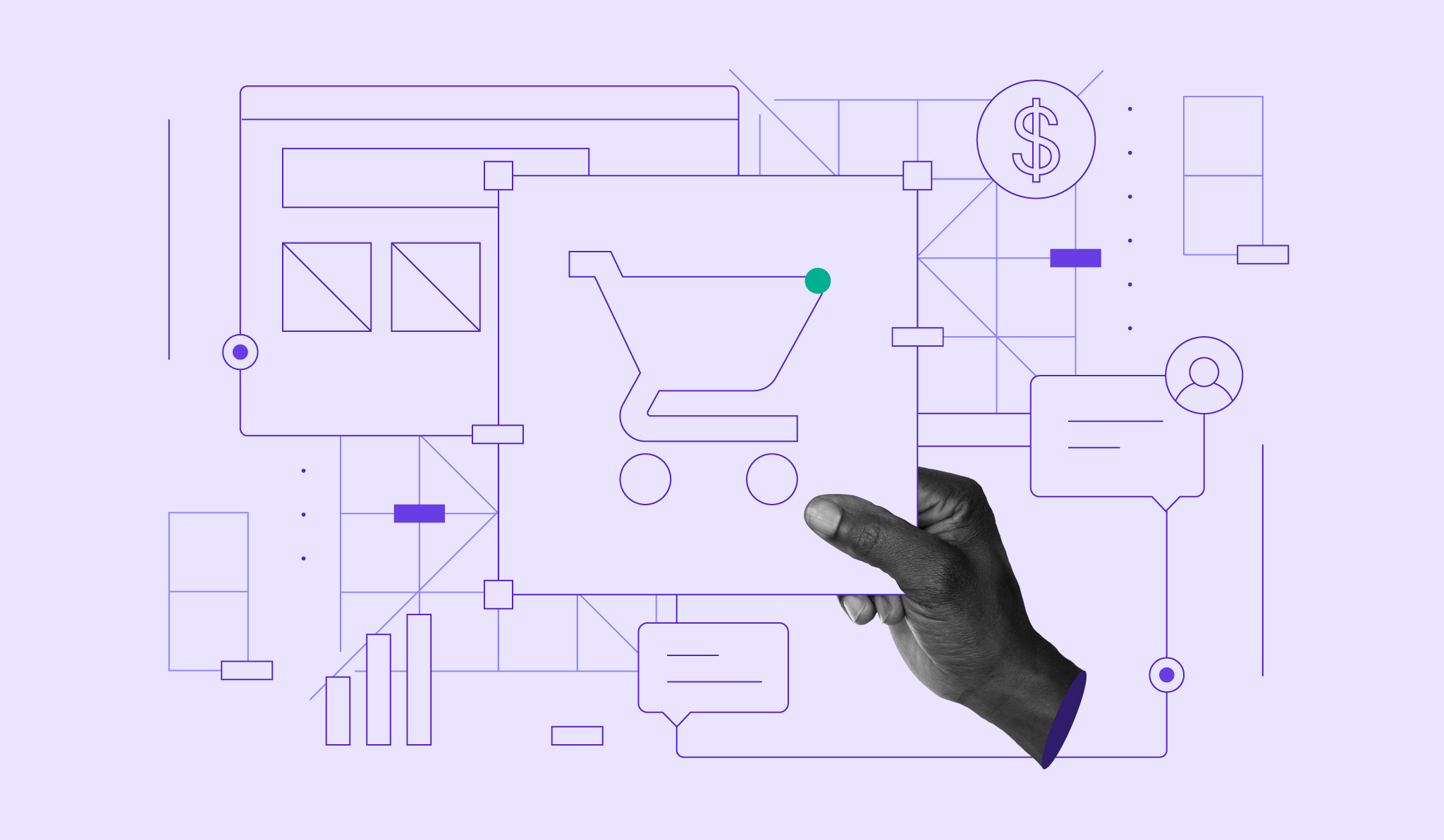
While creating an ecommerce store is a big achievement, it’s only half the battle. The real challenge is getting potential customers to visit and make a purchase. That’s where ecommerce marketing comes in.
Ecommerce marketing helps people discover and shop at your online store. Whether you’re just starting out, running a small business, or looking to grow your customer base, this tutorial will help you improve your efforts and get better results.
We’ll share easy-to-follow tips on where to promote your store, how to reach the right people, and how to keep them coming back. Don’t worry, all tips and strategies are practical, beginner-friendly, and work for any business size and niche.
What is ecommerce marketing?
Ecommerce marketing is a part of digital marketing that focuses on promoting online stores. It’s all about connecting with potential customers throughout their shopping experience ‒ from when they first discover your store to when they make a purchase.
By understanding what your visitors need and how they shop online, you can attract the right people to your site and turn them into happy, repeat customers.
Unlike one-size-fits-all marketing, which pushes the same message to everyone, a customer-centric approach creates relevant messages for each stage of the buying journey.
If done right, ecommerce marketing can boost people’s trust in your brand and turn one-time buyers into loyal customers.
Did you know?
There are six ecommerce business models, each needing a different marketing approach. Check out our ecommerce tutorial to learn more about the ins and outs of this process.
Core ecommerce marketing channels
A marketing channel is any platform or method you use to reach potential customers and promote your products.
Using just one channel might work at first, but a multichannel strategy increases your chances of reaching more people in the long run.
Here are some of the most common ecommerce marketing channels you can start with.
Search Engine Optimization (SEO)
SEO focuses on improving your website so it ranks higher on search engines like Google. It helps people discover your online store when they search for products you sell.
For example, when I search for “flower store New York,” Google displays Scotts Flowers and PlanShed as top two results organically (meaning they appear based on relevance and SEO, not paid ads).
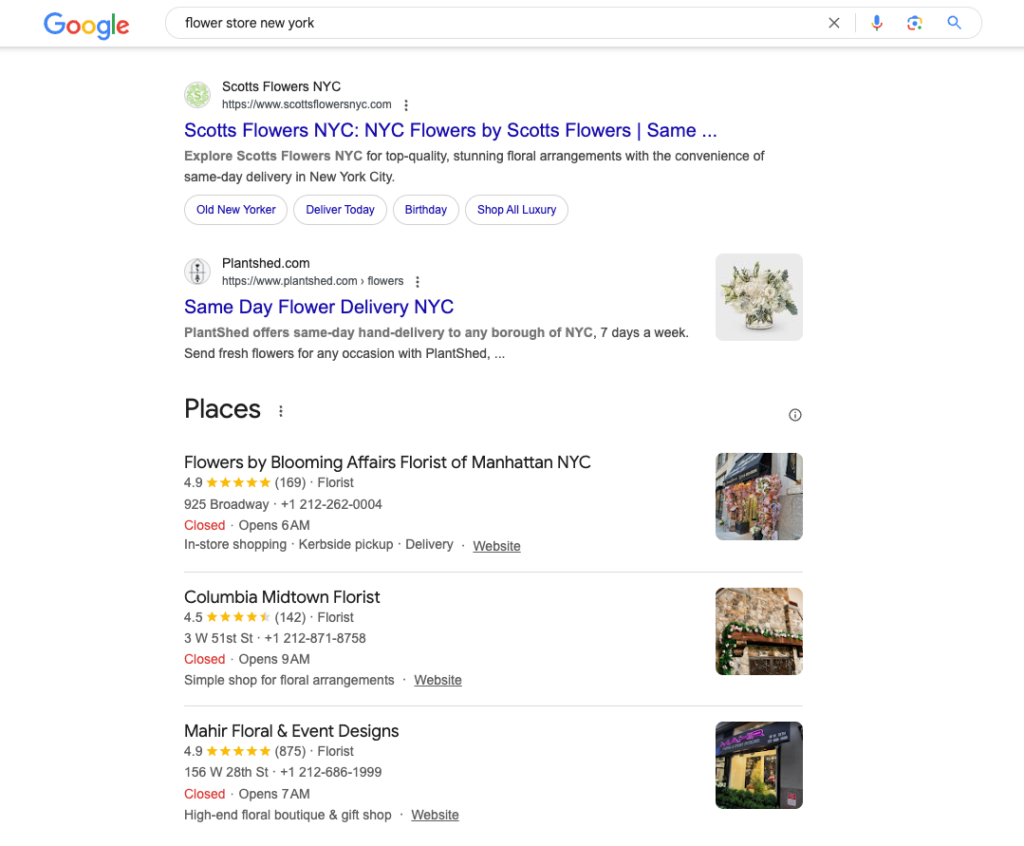
For eCommerce, SEO can bring steady traffic over time without the ongoing cost of ads. Common strategies include:
- Using relevant keywords in product titles and descriptions
- Optimizing product images
- Organizing pages for easy navigation for both users and search engines
There are two main types of SEO that work together to improve your visibility: on-page and off-page SEO.
On-page SEO is about the content and user experience of your site, including product descriptions, headings, and internal links. On the other hand, off-page SEO focuses on building trust and authority through external efforts, such as obtaining backlinks from other websites and promoting your business on social media.
We have a separate article that covers what SEO is in more detail. Give it a read to learn best practices, tools, and how to make the most of it for your ecommerce store.
Content marketing
This marketing approach involves creating useful, engaging content that attracts potential customers to your store.
Instead of directly promoting products, it focuses on helping people solve problems, learn something new, or get inspired ‒ building trust along the way.
Common content formats include:
- Blog posts. Product guides, how-tos, or tips related to your niche.
- Videos. Tutorials, unboxings, or behind-the-scenes clips.
- Infographics. Visual summaries of data, steps, or comparisons.
- Case studies or customer stories. Real-world examples of how people use your product to improve their quality of life or solve problems.
- Interactive tools or quizzes. Product finders or style matchers that offer a personalized experience.
Dr. Pamela Dragos, for example, embeds a blog on her website to share insights about holistic pet care, from diet tips to ways to improve animals’ quality of life. This established her credibility as a certified veterinary acupuncturist and promoted her services.
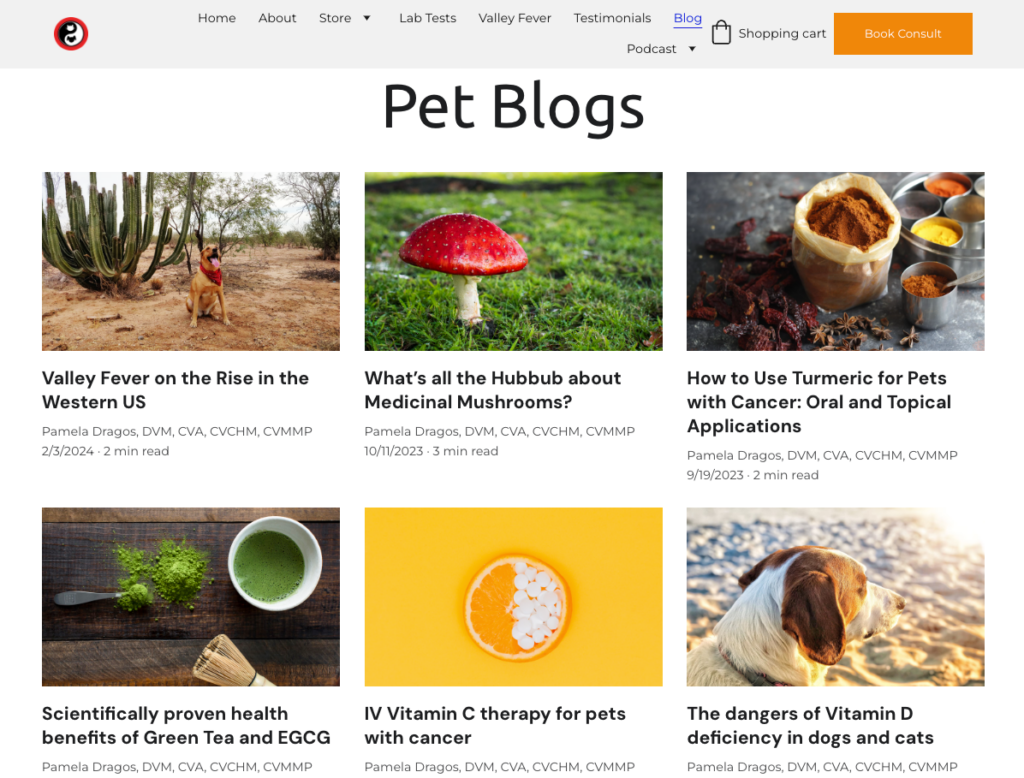
Need help getting started? Check out our beginner-friendly guide on how to write SEO-friendly content for useful tips. You can also explore our list of blog post ideas for different niches to spark inspiration.
Social media marketing
As the name suggests, this marketing approach uses social networks like TikTok, Instagram, and Facebook to promote your brand, connect with your audience, and drive traffic to your store. It’s a great way to reach new customers and stay relevant to the existing ones.
One of the biggest benefits of social media is that it helps build a community around your brand. By sharing helpful tips, behind-the-scenes content, customer stories, or product updates, you create space for engagement. Over time, this can lead to stronger trust, repeat customers, and word-of-mouth referrals.
MLAstro, an online store selling astrophotography and spectrography gear, is a good example. They use Facebook (MLAstro’s page) to show how their products benefit people in the astronomy and space science community.

Social media works hand in hand with other marketing efforts. For example, you can repurpose a blog post into a series of short tips for Instagram or turn a how-to article into a video for TikTok.
It can also support influencer marketing. When creators share your products with their followers, it helps you reach new people and build trust through voices they already know and follow.
Email marketing
Email marketing is a practice of sending targeted messages directly to people who’ve signed up for your newsletter, made a purchase, or interacted with your store.
To get started, you’ll need a business email, an email marketing service, and a signup form on your website to collect subscribers. If you’re using Hostinger Website Builder, Reach represents a streamlined solution that integrates directly with your store and uses AI to create professional emails from your ideas in minutes – no design skills required. From there, you can send emails like product updates, special offers, abandoned cart reminders, or niche-specific tips.
Email works best when it feels personal and relevant. Rather than sending the same email to everyone, group subscribers by interests, past purchases, or behavior. We’ll talk more about defining your target audience later.
Here are some email campaign ideas you can try:
- Welcome emails. Include a discount or helpful tips for new subscribers.
- Product recommendations. Suggest items based on past purchases or browsing history.
- Seasonal promotions. Tie your offers to holidays or events.
- Behind-the-scenes updates. Share what’s happening in your business or niche.
- Re-engagement emails. Reach out to subscribers who haven’t opened your emails in a while.
Semrush, an SEO service, adds value to its newsletter by sharing tips and offering affiliate perks. Like with social media, you can repurpose blog content for your emails to save time and keep your messaging consistent.
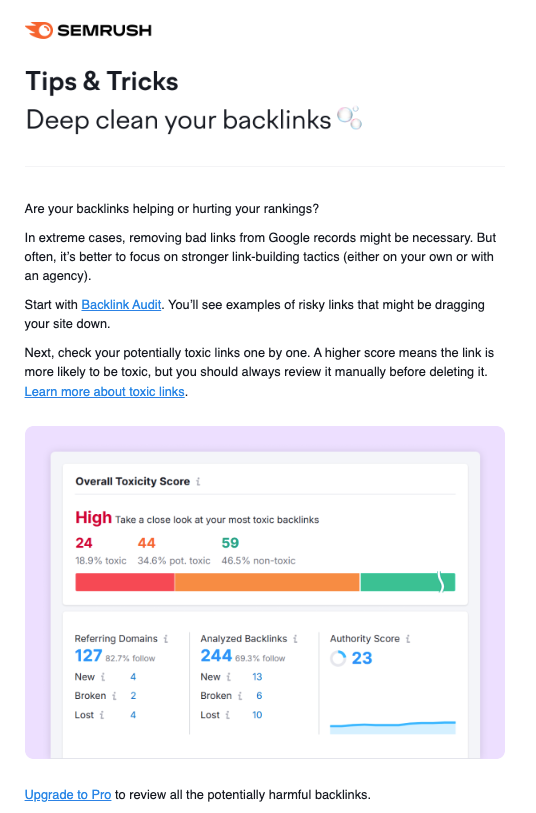
Check out our guide to creating an email newsletter in four easy steps.
Did you know?
People open and trust emails more when they come from a custom domain. Find a domain name that suits your brand and niche at Hostinger.
Affiliate marketing
Affiliate marketing is a strategy where content creators and influencers share your product links on their platforms and earn a commission for every sale they generate.
Saema (@saemas.nail.obsession), for example, partners with a jewelry producer and showcases their pieces in her Instagram posts. Her followers can use her affiliate code to buy the jewelry at a discount, earning her a commission on each sale.

This strategy allows you to reach new audiences through trusted voices. Affiliates recommend your products in a personal and authentic way, which can feel more genuine than direct advertising.
To get started, you can create your own affiliate program using tools like Partnero or sign up with affiliate networks like ShareASale, Impact, or PartnerStack. Set a fair commission and provide affiliates with trackable links and marketing assets.
Keep in mind that not all influencers are a good fit. The ideal affiliate creates content and shares values that align with your brand. Their audience should also overlap with yours so that there’s a chance to attract them to your brand as well.
Once your affiliates are on board, use affiliate tracking tools to monitor clicks, conversions, and sales. Track performance regularly to see what works, reward top partners, and continuously improve your program.
See our list of the best affiliate marketing websites to learn how different affiliates grow businesses’ sales and brand awareness.
Paid advertising (PPC)
Instead of relying on SEO like other marketing channels, PPC lets you pay for visibility on search engines and websites. You place ads that show up when people search for keywords related to your products and pay based on the number of clicks they get.
You don’t have to look far for an example ‒ sponsored posts at the top of Google’s search results are powered by Google AdSense.
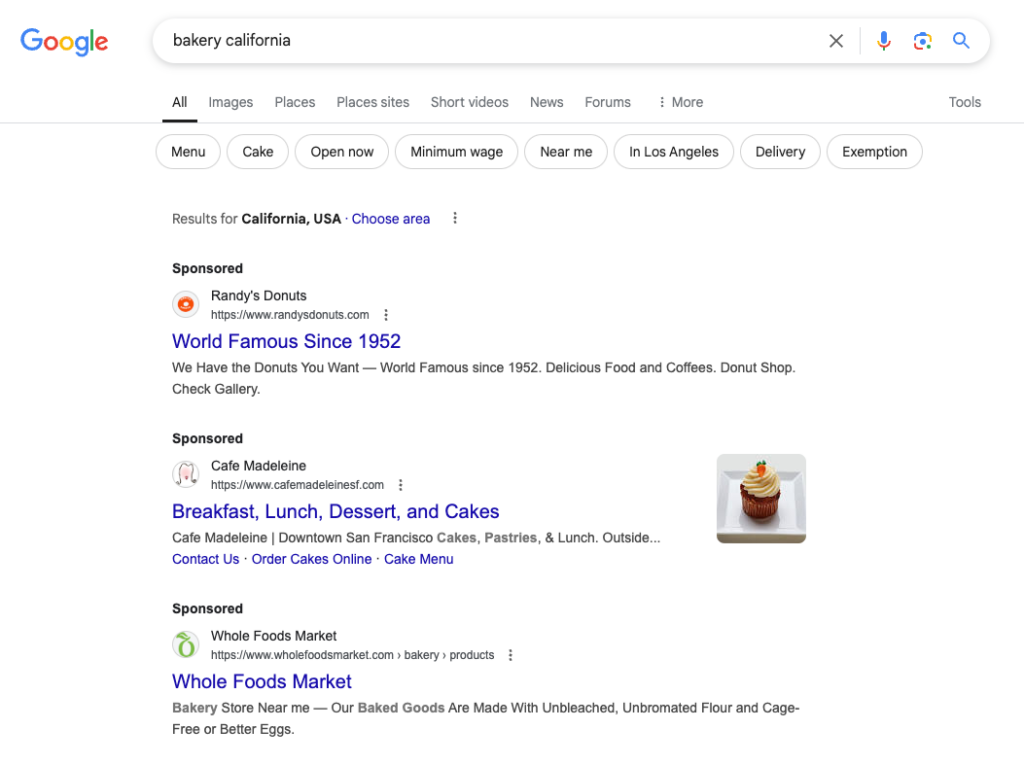
Start by setting clear goals and identifying your target audience. Next, choose an advertising platform where your potential customers spend time, and create compelling ad copy. Once you’re ready, set a budget, bid on keywords, and watch the traffic roll in.
Don’t forget to track your campaign’s performance and find opportunities for optimization. We’ll cover this in more detail later.
Did you know?
If you build your ecommerce store with Hostinger’s site builder, you can connect it to Google Ads and create a campaign from your hosting account.
Defining your target audience
Understanding your target audience makes for more effective campaigns, better products, and ultimately, a stronger connection with your customers. Let’s break down the key steps to make this happen.
Performing market research
This step involves gathering insights about your customers and the industry you operate in ‒ trends, customer needs and pain points, and competitor strategies. With this information, you can identify gaps and opportunities in the market and make informed decisions.
Google Analytics is one of the best tools to collect data on website traffic and visitors’ behavior. Hostinger users can easily connect this free analytics tool to their website built with our builder.
Social media analytics offer insights into your audience’s engagement, behavior, and preferences. Meanwhile, surveys are effective for analyzing their shopping habits and pain points.
Creating buyer personas
A buyer persona is a semi-fictional representation of your ideal customer, built from market research. It helps you better understand your target audience by identifying their key characteristics, behaviors, and motivations.
In ecommerce marketing, buyer personas lets you create personalized messages that directly address the needs and desires of each segment. This level of personalization can boost engagement and conversion rates, as your customers will feel like your marketing speaks directly to them.
Here are some key questions to help you create a detailed buyer persona for your business:
- What is their age?
- Where do they live?
- What is their occupation?
- What do they care most about?
- How do they spend their free time?
- What problems do they need solving?
- Where do they usually shop?
- What types of promotions or offers attract them?
Building a marketing segmentation strategy
Once you’ve defined your buyer personas, break down your audience into smaller, actionable groups. Use the personas as a guide to create segments based on demographics, interests, behaviors, and where they spend their time online.
For example, younger customers might prefer influencer promotions on social media, while older customers might respond better to email offers or product reviews.
This segmentation ensures your marketing messages are tailored to each group, making them more relevant and increasing the chances of conversion.
Niche-specific ecommerce strategies
Different ecommerce businesses need different approaches, so adapting your marketing to your market is crucial. We’ll go through popular ecommerce niches and strategies that work best for each one.
Food and beverages
To sell food, it needs to look appetizing. Since appearance is everything in this industry, high-quality food photography can drive traffic to your website and social media. Invest in professional photos to make your products look irresistible, like Strawberry Blonde Baking (@blondebaking) did on their Instagram account.

User-generated content can also build trust. Offer discounts or freebies to encourage customers to share their meals on social media.
Create urgency with limited-time promotions and seasonal offers. Also, optimize your content for local SEO by setting up a Google Business Profile (formerly Google My Business) and including location-based keywords to attract nearby customers.
Looking to start a food business? Our guide covers all the steps and legal requirements you must know.
Digital products
Content marketing works well for selling digital products because it allows you to offer value upfront, showcasing benefits, features, and use cases. You can start with a blog, which also helps build your authority in your field.
Tutorials and ebooks are especially effective for sharing product knowledge and educating potential customers on how your products can benefit them. All articles on the Hostinger Tutorials page, including this one, are examples of this strategy.
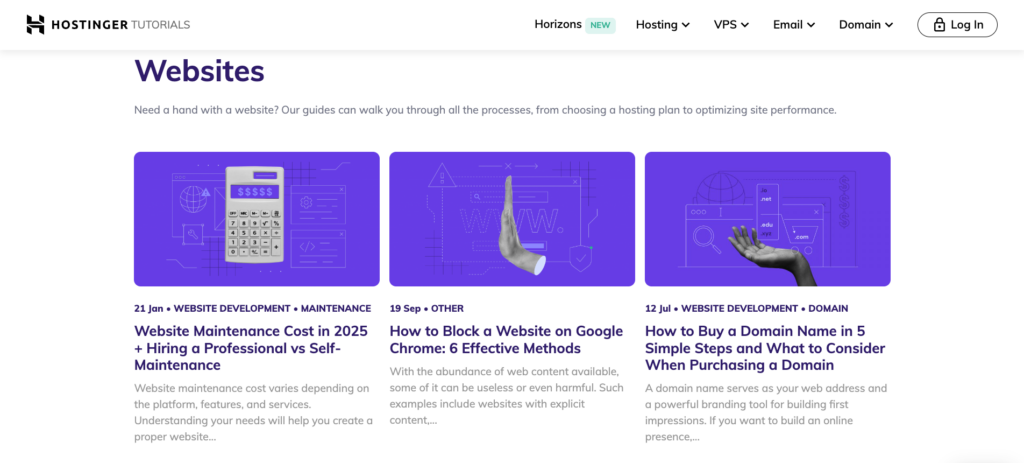
Combining content with email marketing also helps grow your email list. By offering valuable content in exchange for sign-ups, you build an engaged audience that’s easier to guide through your sales funnel.
Tech gadgets and electronics
Customers in this niche usually look for opinions from trusted sources before making a purchase, so focus on product reviews and unboxing videos to influence their buying decisions.
Partnering with influencers or tech bloggers, like Kevin De La Cerna (@kevincharlesdc), to review your products is another effective way to boost trust. Platforms like TikTok have a growing tech community sharing reviews and tutorials, offering plenty of collaboration opportunities.
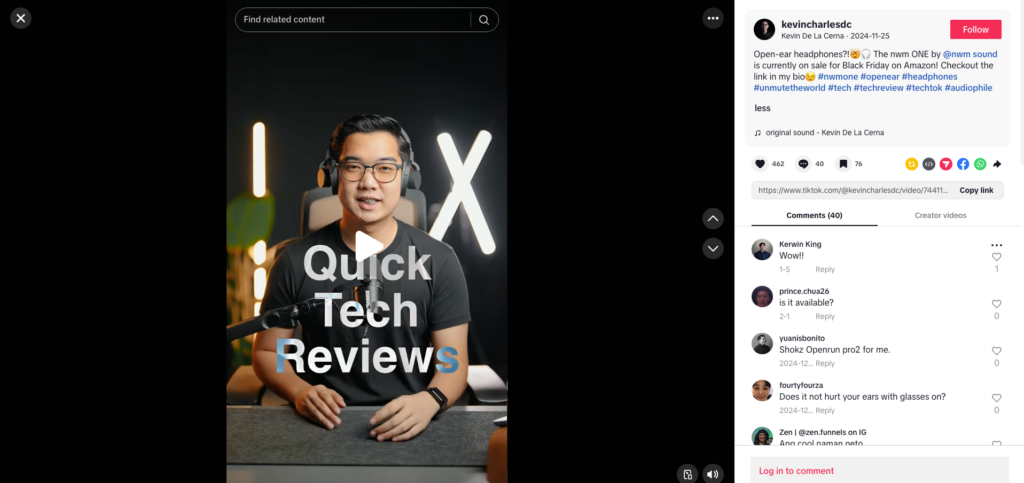
Since tech enthusiasts love being the first to try new products, offer early access or pre-order campaigns to capitalize on this trend. This strategy builds excitement and urgency, making early buyers feel part of an exclusive group and boosting the product’s value.
Fashion
Fashion is another niche that thrives on visual platforms like TikTok and Instagram. Many fashion businesses focus on collaborating with influencers, exploring trends, and sharing outfit inspiration to grab attention and drive sales.
Since clothing and accessories can look different on various body types, user-generated content works as powerful word-of-mouth marketing. Brands like Cloak (@cloakbrand) often showcase customer posts, which generate positive responses from the posters and their audience.

If you have the resources, consider hosting live shopping events. Viewers can watch product demos, ask questions in real time, and buy directly through the platform. This trend is especially popular with younger audiences in Asia, though it’s catching on in other regions too.
We have a separate article covering the steps to putting up jewelry for sale. Or, check out our guide on selling clothes online for more tips.
Beauty and personal care
Gaining visibility is key in this industry, and influencer marketing can help you achieve that.
Once customers buy your products, encourage them to leave reviews as user-generated content. Showcasing your products in action, like through skincare routines or makeup tutorials, helps buyers visualize their benefits.
Natio (@natiobeauty) is a great example, sharing inspiring looks with its own cosmetic lineup.

Product bundles are a great way to encourage sales and allow customers to try multiple products from your lineup. You can also offer free samples to make the deal even more appealing, especially for first-time buyers.
Building customer loyalty
What’s better than having customers? Customers who keep coming back. This is why customer loyalty is key to your long-term success.
Loyal customers tend to buy from you again, recommend your brand to others, and provide valuable feedback. It’s also more cost-effective to retain existing customers than to find new ones.
Here are some of the best ways to nurture customer loyalty:
Offering loyalty programs
This approach rewards repeat customers with benefits like discounts, exclusive offers, or early access to new products. It encourages return visits and helps increase average order value.
There are various types of loyalty programs, each with its own appeal. Point-based programs, like Sephora’s Beauty Inside, let customers earn points for every dollar spent, which they can redeem for rewards. This type is great for encouraging repeat purchases and can be customized based on customer preferences.
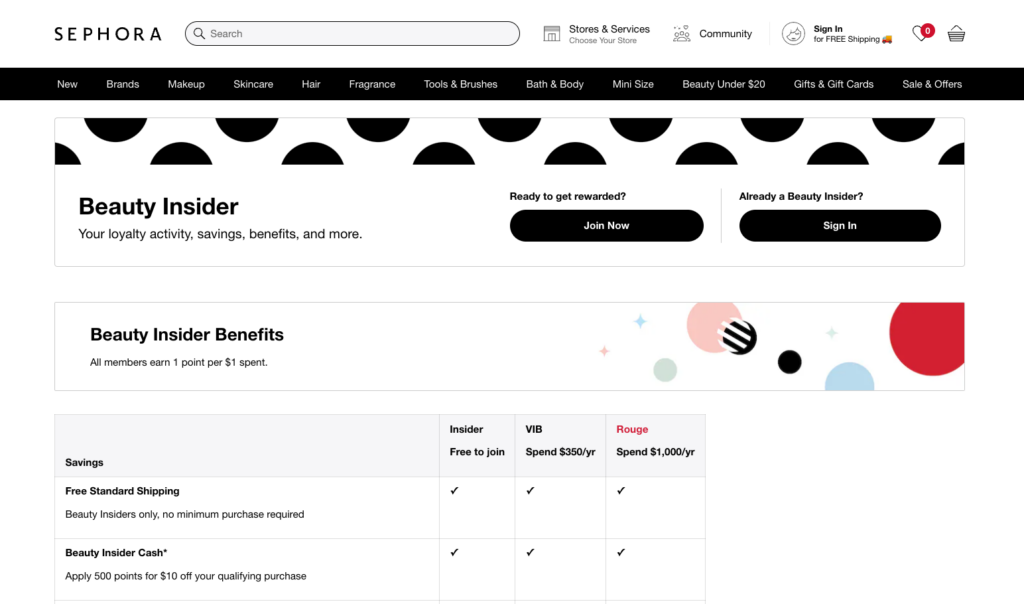
Tiered programs reward customers based on their spending or engagement. For example, Starbucks Rewards offers different perks depending on the customer’s tier, such as free birthday drinks, bonus stars for purchases, and personalized offers.
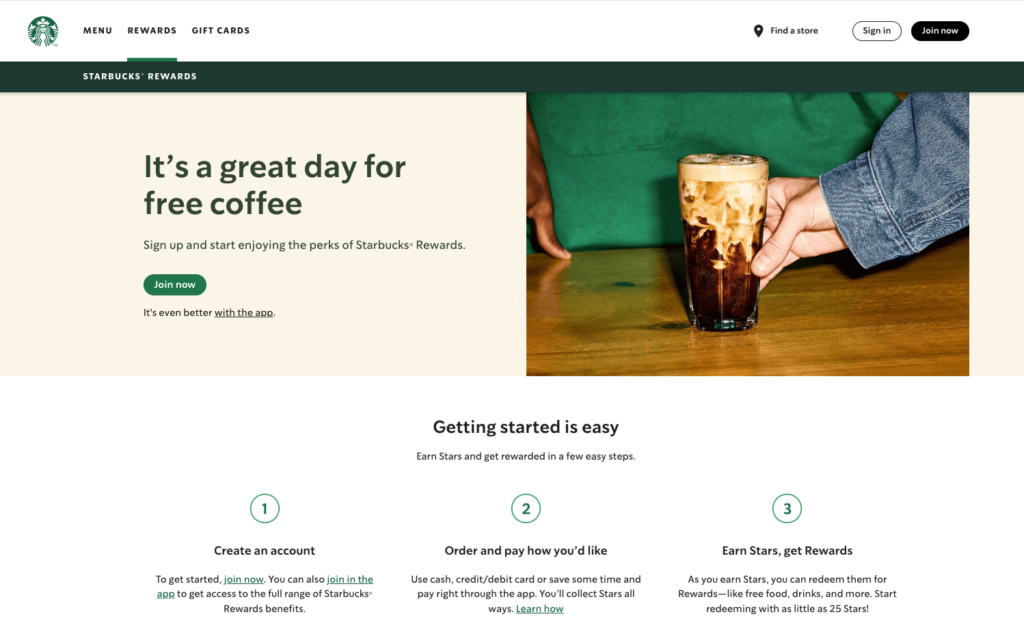
Other popular types include cashback, referral, and subscription-based programs. Be sure to pick one that suits your business and customer base best.
Great customer service
Customers are more likely to return if their first experience with your brand is positive. This means making it easy for them to reach you and get fast, helpful support when needed.
To improve customer experience, offer multiple contact channels. Our ecommerce statistics show that 47% of customers prefer live chat, followed by phone and email. For younger audiences, consider setting up support on popular social networks.
Train your team to handle inquiries quickly and professionally. Empowering your staff to solve problems without delays creates a smoother experience. To save time, consider using AI-generated automated responses for common queries.
Creating personalized post-purchase experiences
Building customer loyalty doesn’t stop when customers leave your website.
After a purchase, send a personalized thank-you email and offer product recommendations based on what they bought. You can also provide helpful tips, like care instructions or how-to guides, to enhance their experience and keep your brand in mind.
To make customers feel valued, consider offering exclusive discounts on future purchases. Also, after resolving any issues, follow up with a quick message asking for feedback. This shows you care about their experience and are committed to improving your service.
Expanding to international markets
Once you’ve nailed your local market, it’s time to go international. Here are some key factors to consider to make the experience smooth for buyers around the world.
Currencies
Offering multiple currencies makes shopping easier for international customers. Many ecommerce platforms like Shopify or WooCommerce automatically convert prices based on customers’ location, helping them feel more confident about the final cost.
Be transparent about payment processing fees to avoid surprises and ensure customers know exactly what they’re paying. This is especially important when offering multiple payment methods with different rates.
Languages
Being able to connect with potential customers in their own language builds trust and engagement. To make this easier, offer your website in your target market’s local language.
Make sure multilingual support is available throughout the customer journey ‒ from product pages to the checkout process ‒ using language selectors. While automatic translation tools can help, we recommend hiring native speakers to guarantee accuracy and cultural relevance.
International shipping
Shipping can be one of the trickiest aspects of going global, but offering clear, affordable options is key. Be upfront about shipping costs, delivery times, and customs duties, as these can heavily influence buying decisions.
Use trusted carriers for reliable service and make sure they can reach the locations you’re targeting. Consider offering free international shipping for larger orders to incentivize customers to buy more.
Why having a website simplifies global expansion
A website makes it easy to offer features like multiple languages, currencies, and shipping options to reach global customers. You’ll also have full control over your brand and how you market it in different regions, making it easy to create a personalized shopping experience.
Managing payments and shipping is simpler too. You can offer localized payment methods and choose the best couriers for your business. This flexibility might not be available on third-party ecommerce platforms, since they usually work with specific services.
Don’t have a website yet? Build one using Hostinger’s ecommerce website builder. For only $3.29/month, you’ll get everything you need to kickstart your own online store code-free ‒ 100+ payment methods, marketing tool integrations, AI features, Google Ads app, and more.
The plan includes a 30-day money-back guarantee and 24/7 customer support, allowing you to try the site builder risk-free.

Tracking performance and improving results
Earlier, we talked about how important it is to track the performance of your marketing campaigns. However, to really see how your ecommerce marketing is doing, you need to focus on the right key metrics.
Here are key metrics to measure your marketing effectiveness:
- Website traffic. Shows how many visitors come to your site, where they’re from, and which pages they’re viewing.
- Conversion rate. The percentage of visitors who make a purchase, helping you see how well your site turns visitors into customers.
- Average order value (AOV). Tracks how much customers spend per transaction on average.
- Customer lifetime value (CLV). Measures how much a customer is likely to spend over time, helping you assess the impact of loyalty and retention strategies.
- Return on investment (ROI). Compares the profit made from your marketing campaigns to the money spent, helping you evaluate your marketing efficiency.
You can use Google Analytics to monitor these metrics for free, or take advantage of built-in tools in your ecommerce platform. For more insights, third-party services like Kissmetrics, Hotjar, and SEMrush can help simplify the process.
Use the data you gather from these tools to refine your marketing strategies. Test different marketing copies (A/B testing), collect feedback from customers, and optimize your website’s user experience for better results.
Conclusion
As you saw, ecommerce marketing is about truly connecting with your customers. It’s done by understanding their needs, tracking the right data, and constantly refining your approach to make their shopping experience better.
With the right strategies, you can build customer loyalty, tap into new markets, and make your target audience notice your brand’s value ‒ ultimately turning them into loyal, repeat buyers.
Remember that ecommerce marketing is an ongoing process. Just keep testing, adjusting, and learning as you go.
If you don’t have a website yet, now’s the perfect time to start. Try out Hostinger Website Builder and see just how easy it is to create your online store.
Ecommerce marketing FAQ
What is an ecommerce marketing strategy?
An ecommerce marketing strategy is your game plan for getting more people to discover and shop at your online store. It covers how you promote your products, who you’re targeting, and what tools you’ll use. Having a solid strategy helps you get more visitors, make more sales, and build long-term customer relationships.
What is e-marketing in ecommerce?
E-marketing in ecommerce means using the internet to promote and sell products online. It includes tools like email, social media, search engines, and online ads to reach customers, share updates, and drive sales. The goal is to connect with people online and guide them to your store.
What are the benefits of ecommerce marketing?
Ecommerce marketing is a great way to reach more people, boost sales, and grow your brand online. Tools like social media, email, and online ads are more affordable and reach more people than traditional methods like TV or print ads. Plus, you can set your own budget and create targeted marketing campaigns for better results.
All of the tutorial content on this website is subject to Hostinger's rigorous editorial standards and values.


